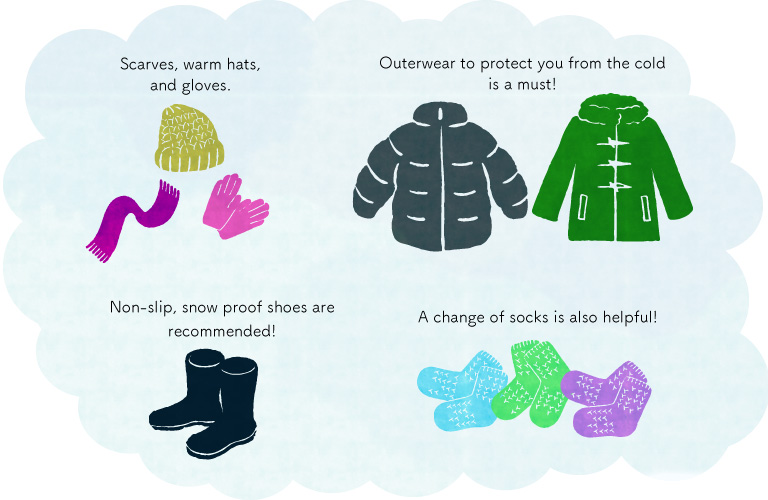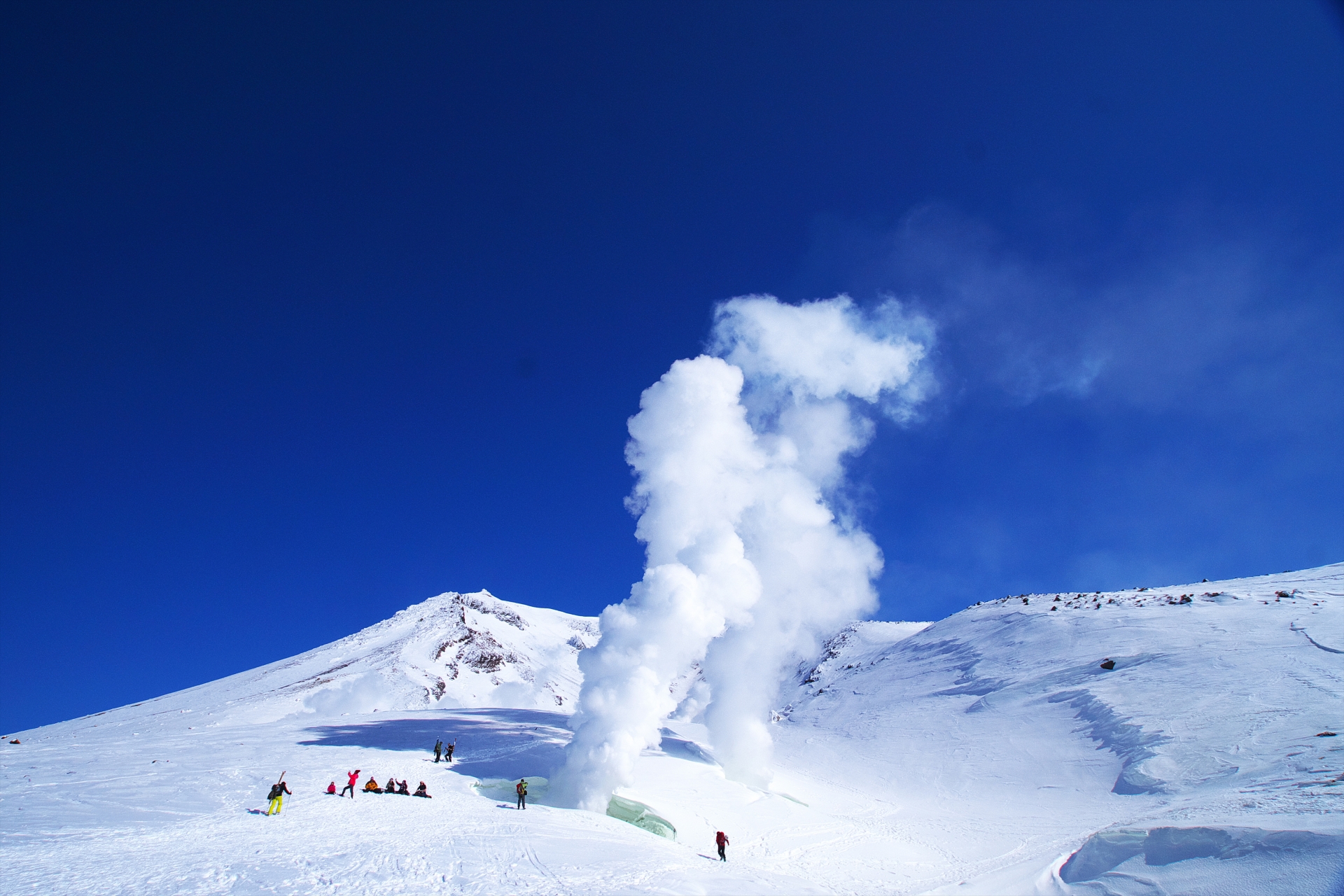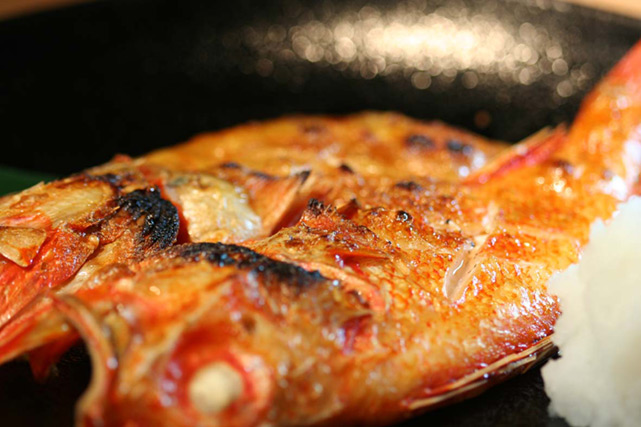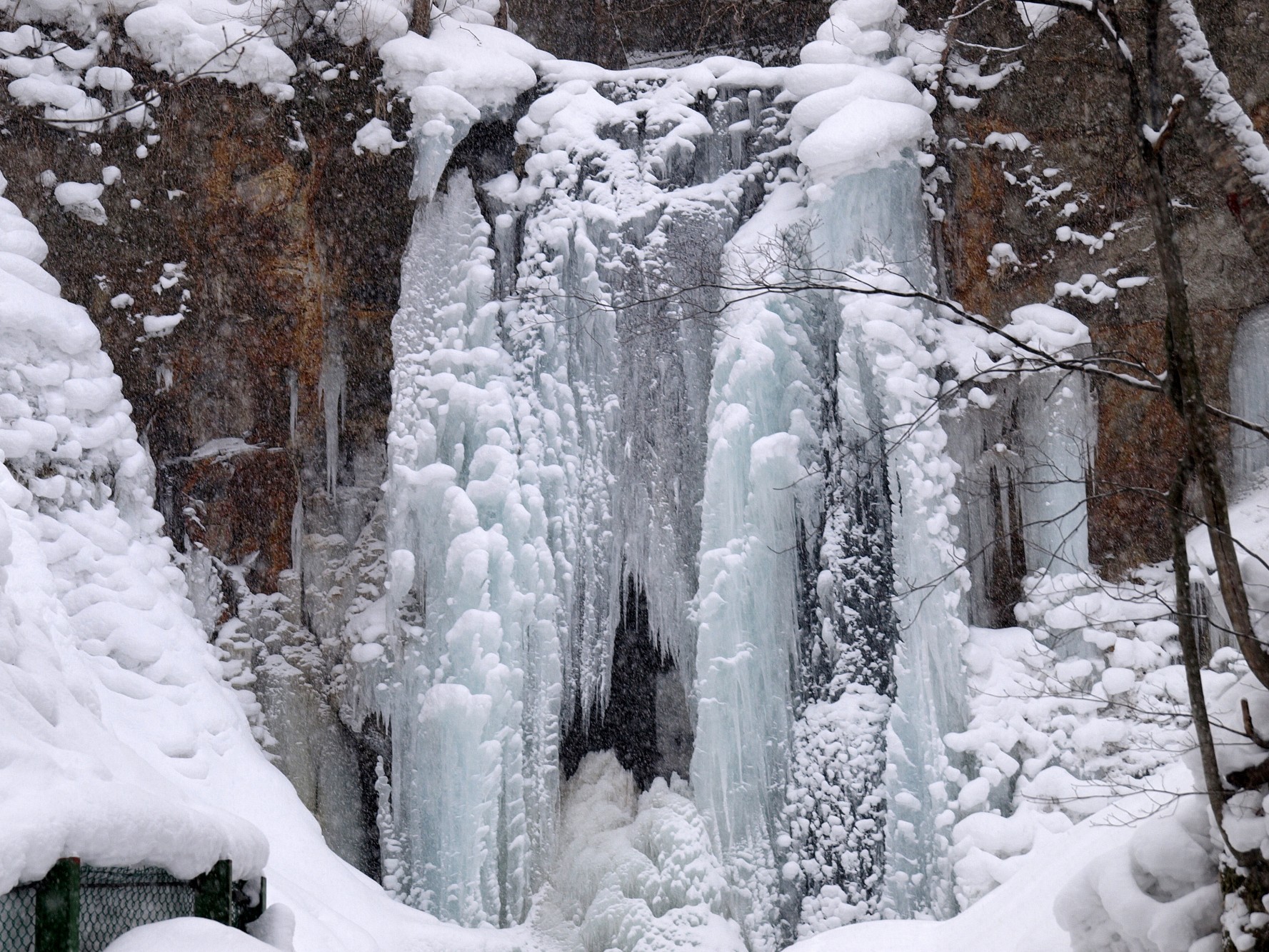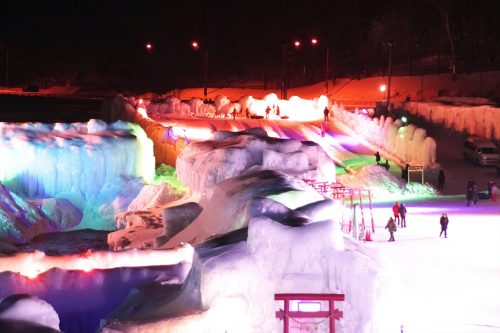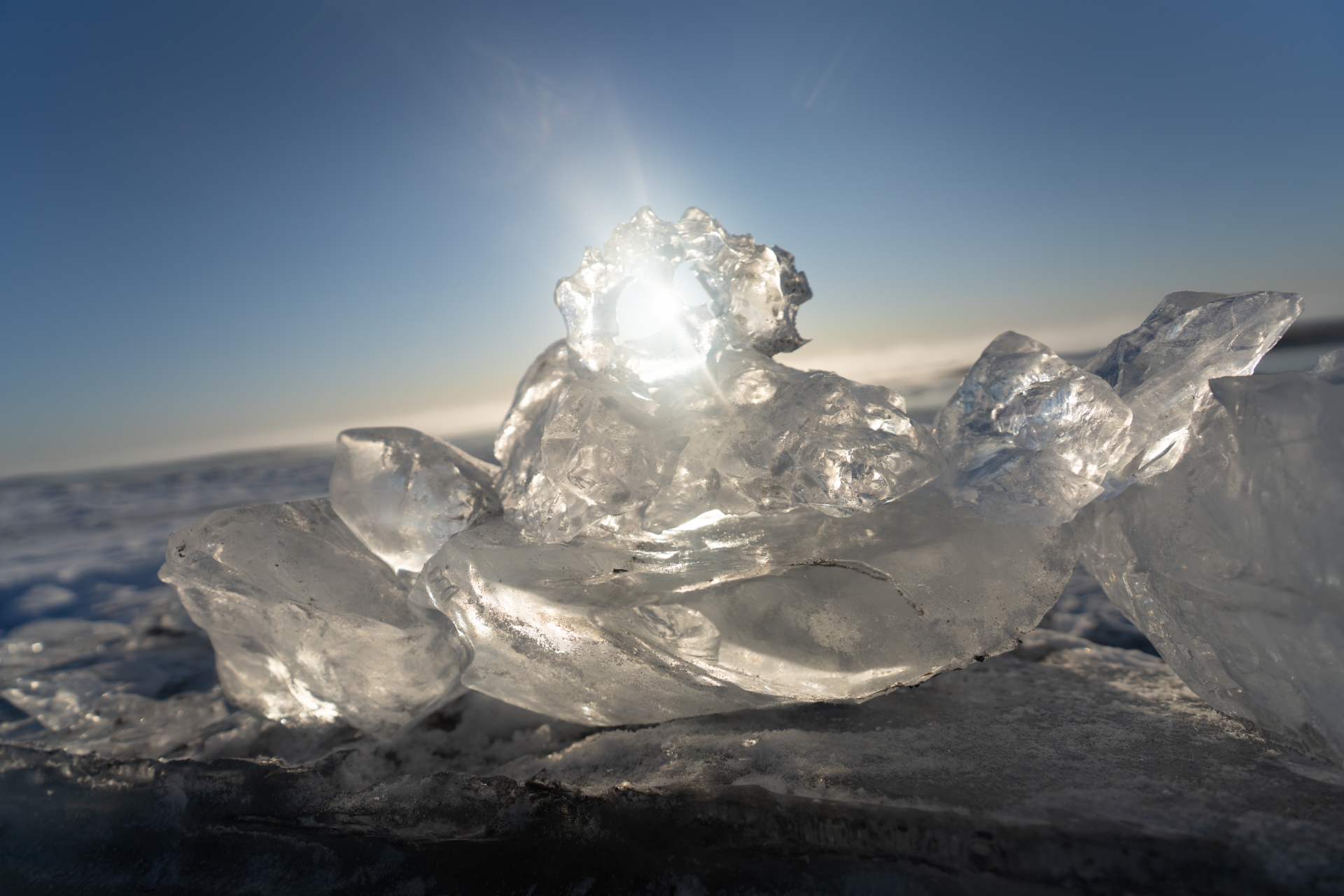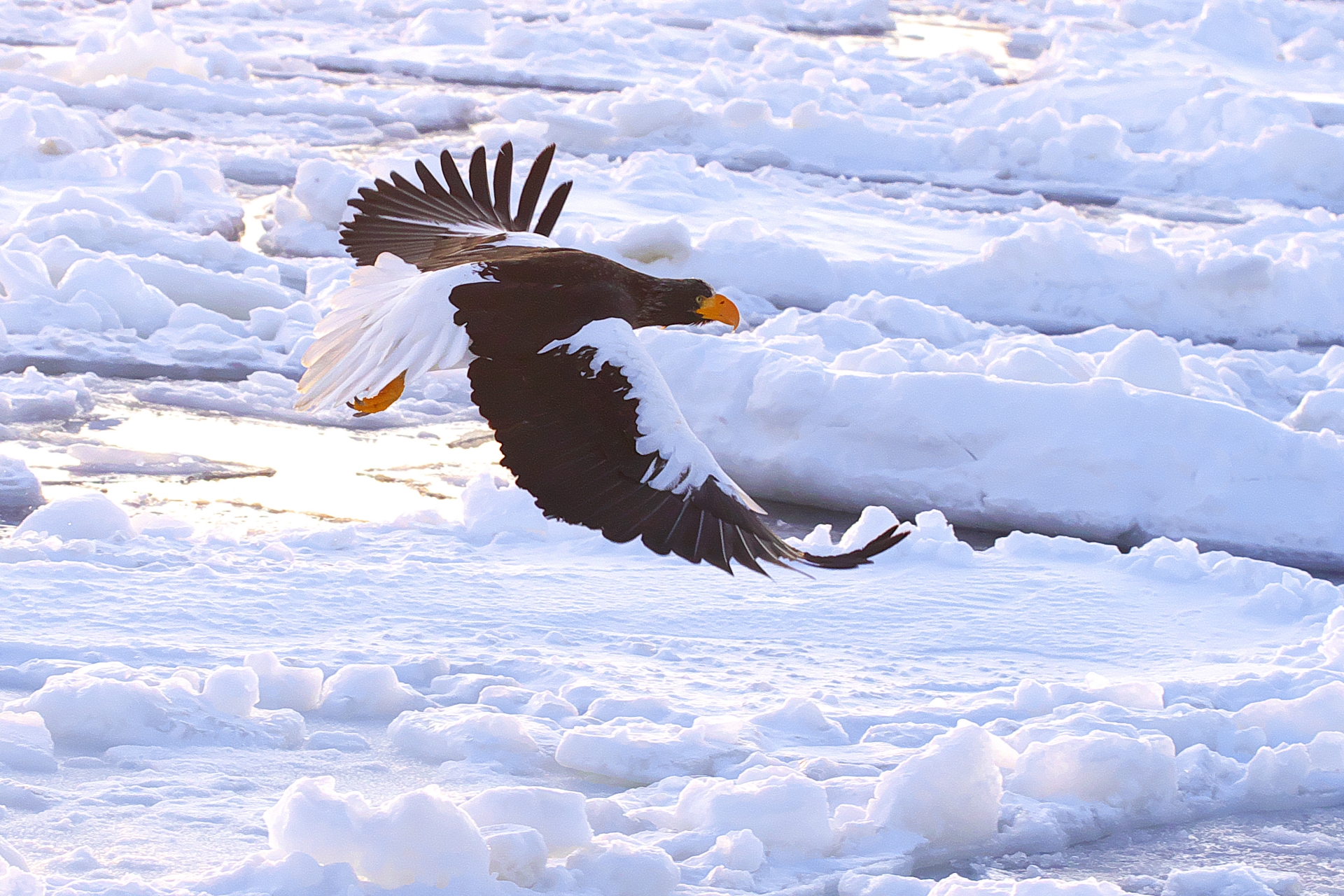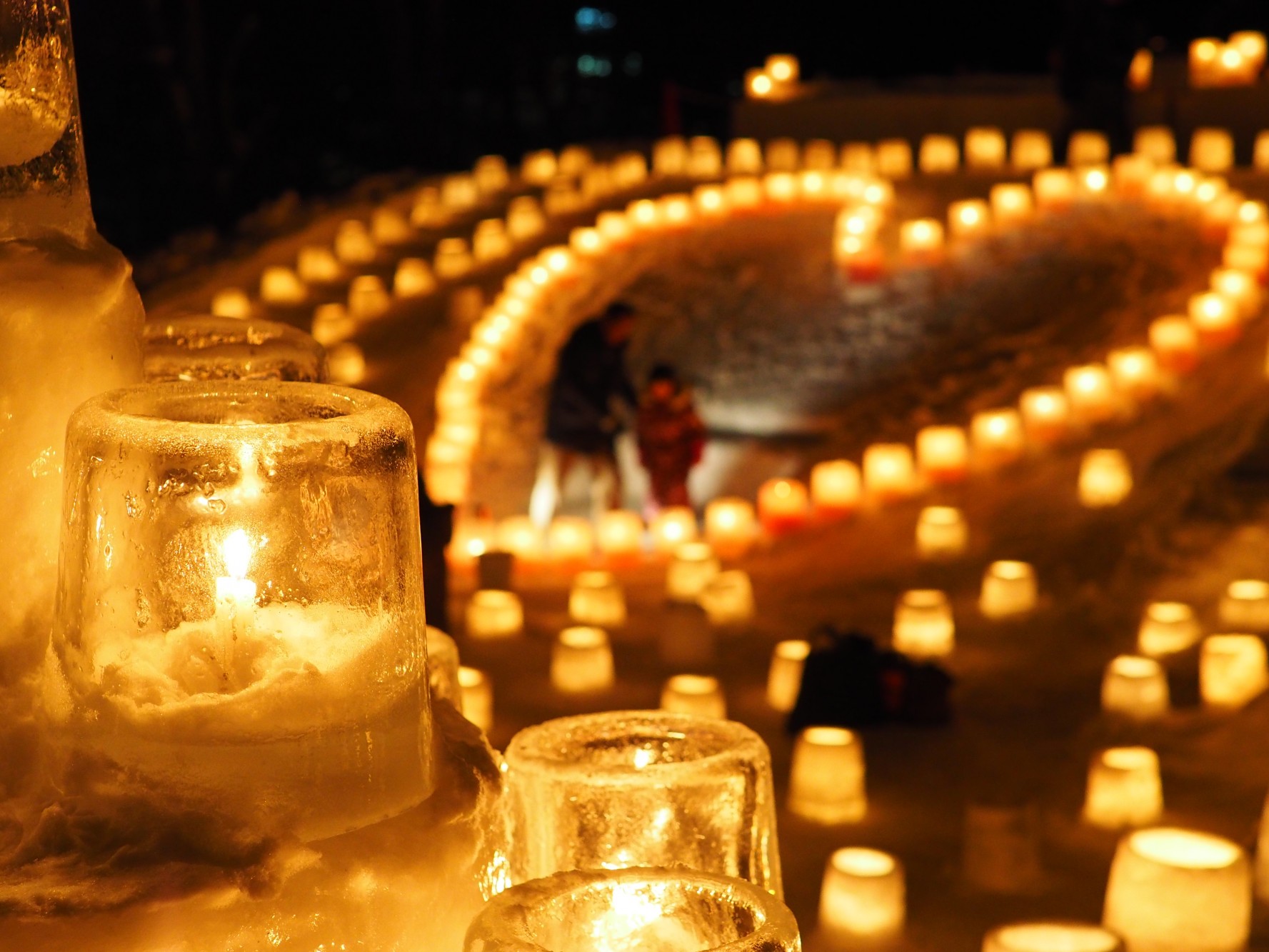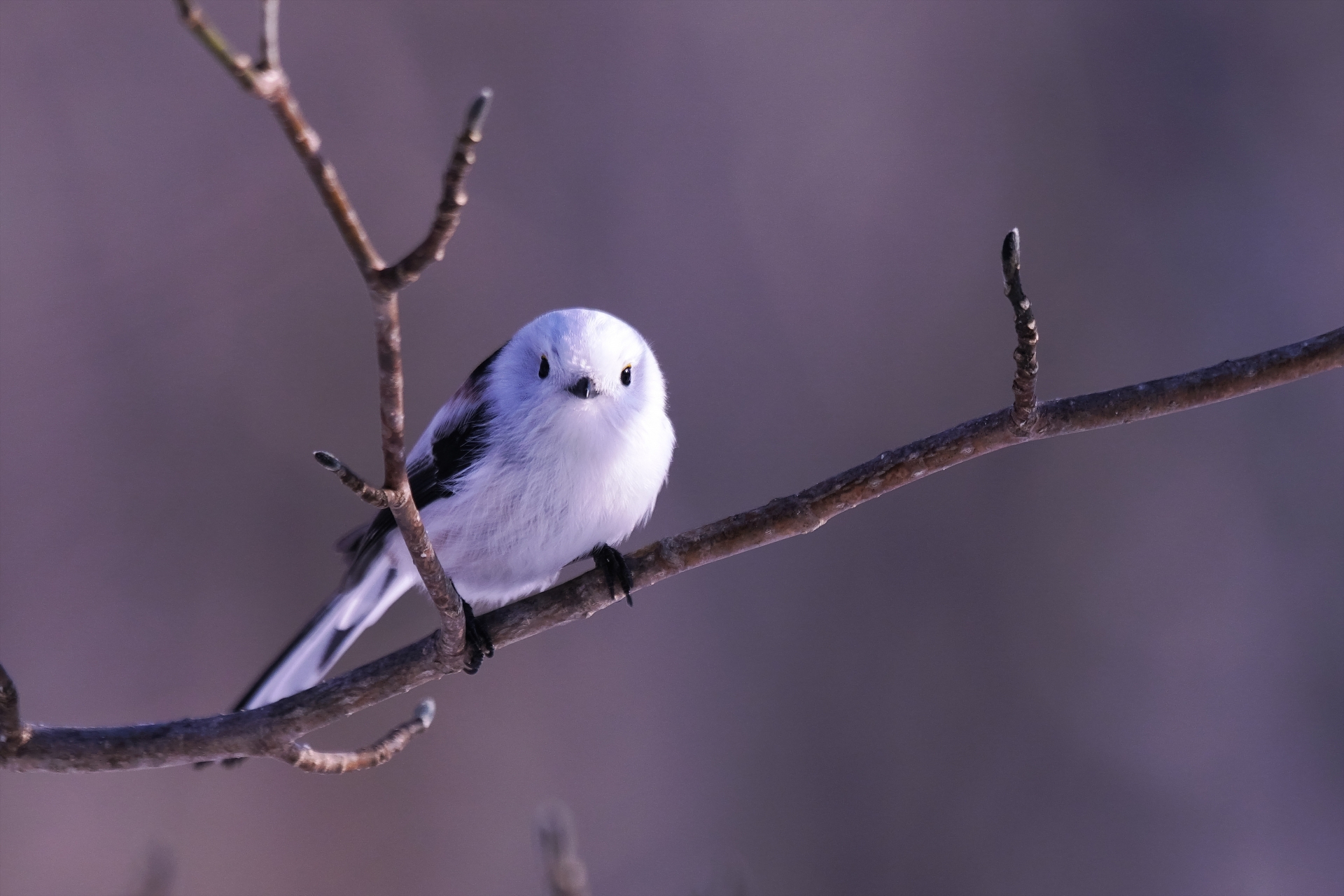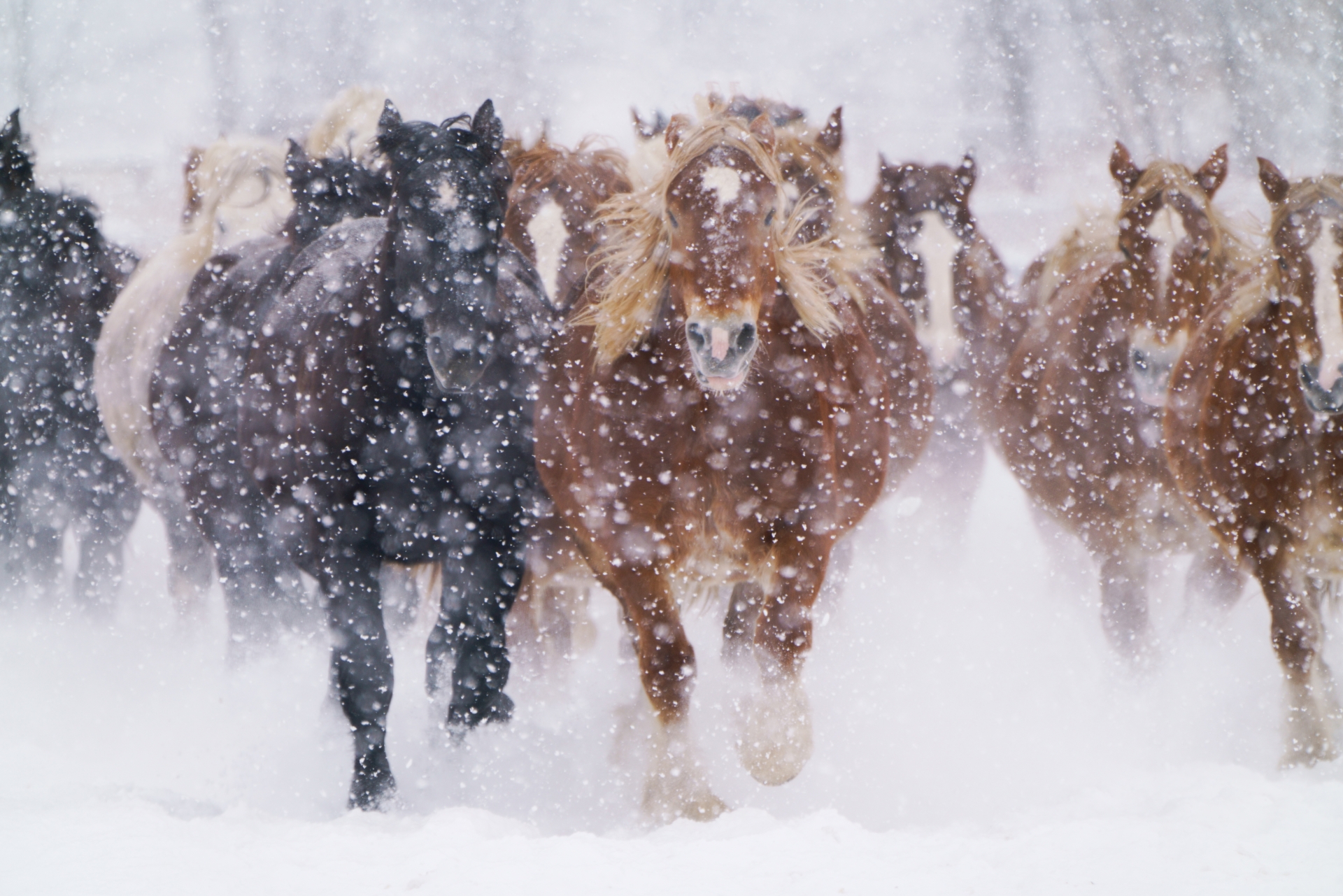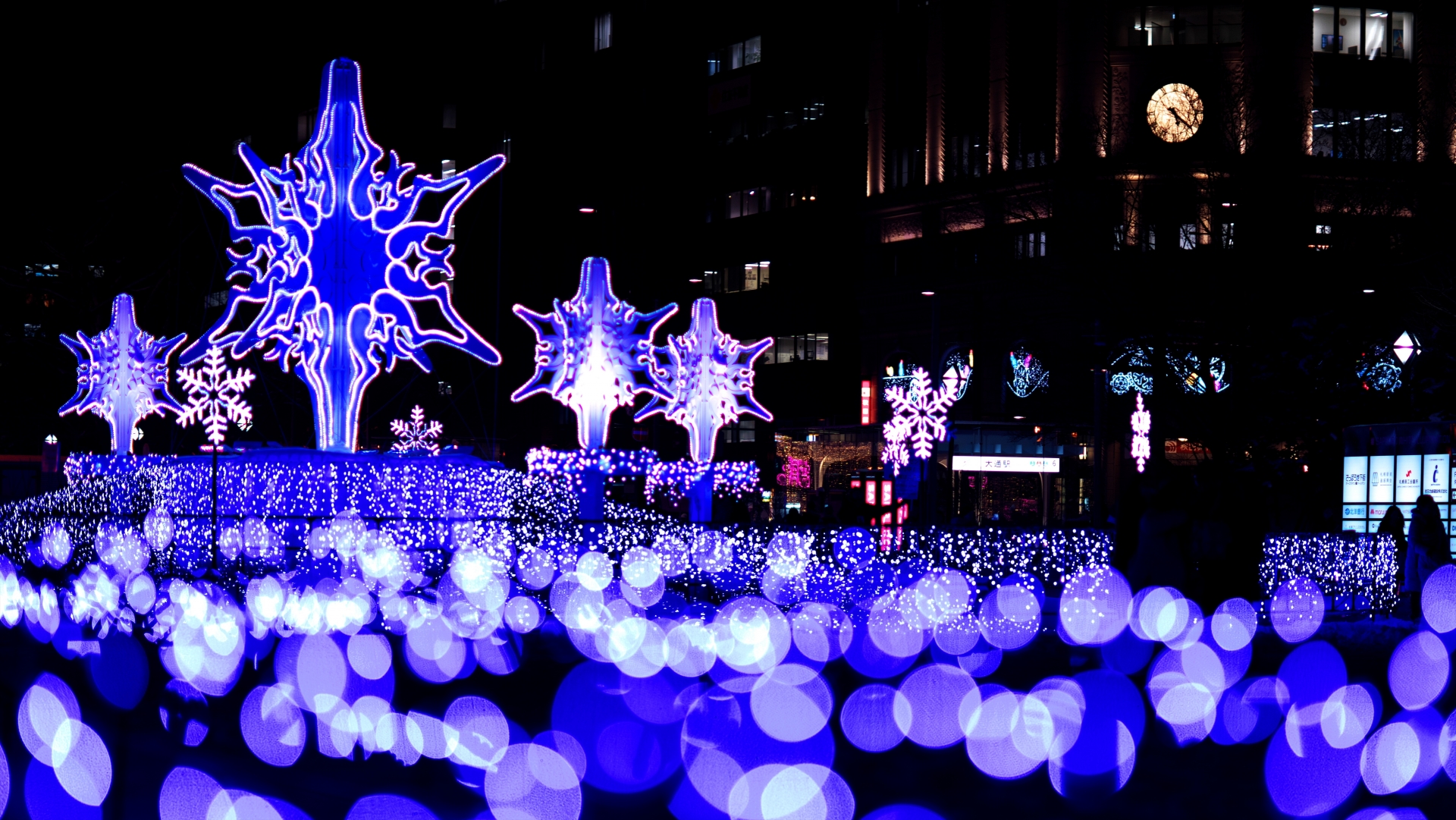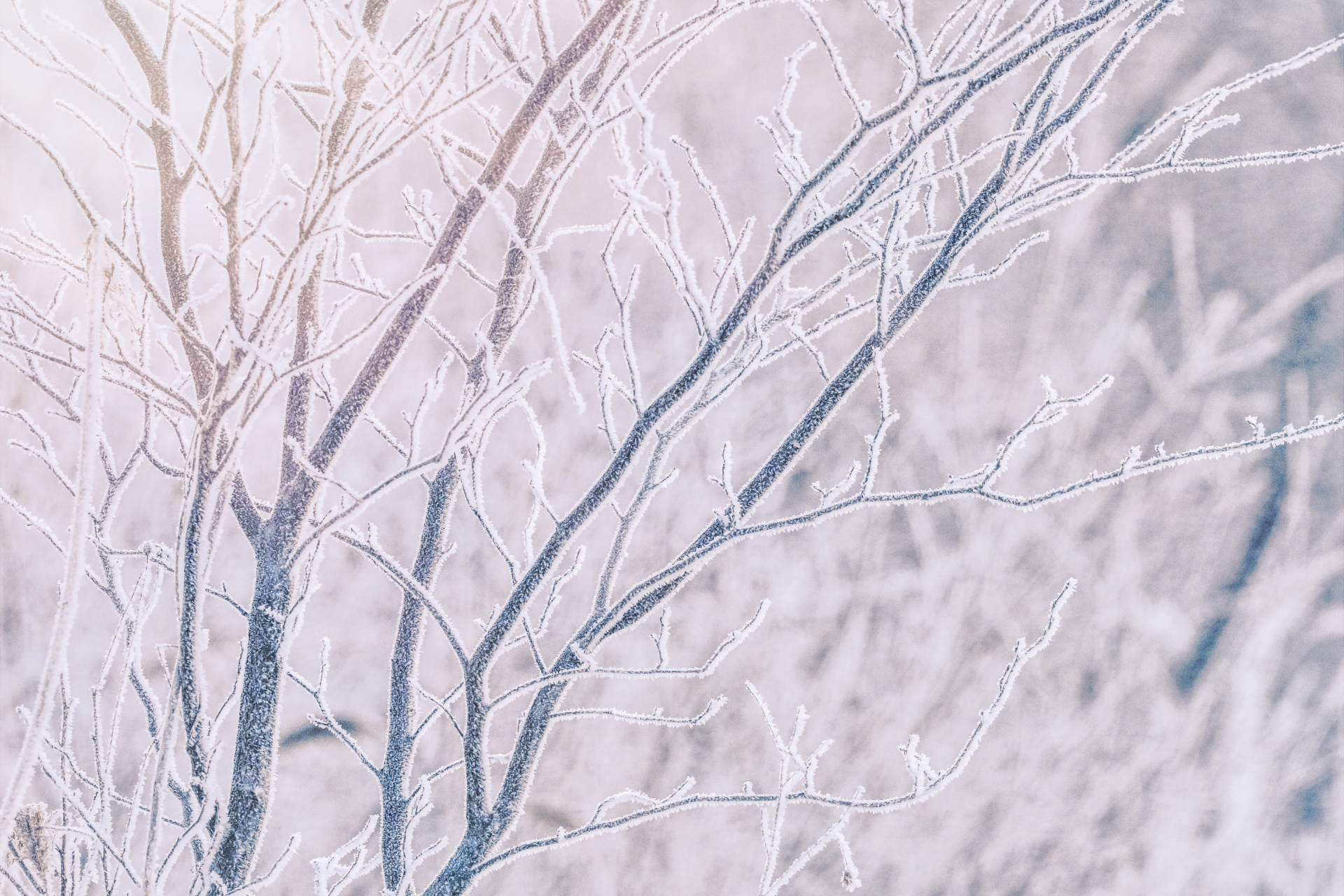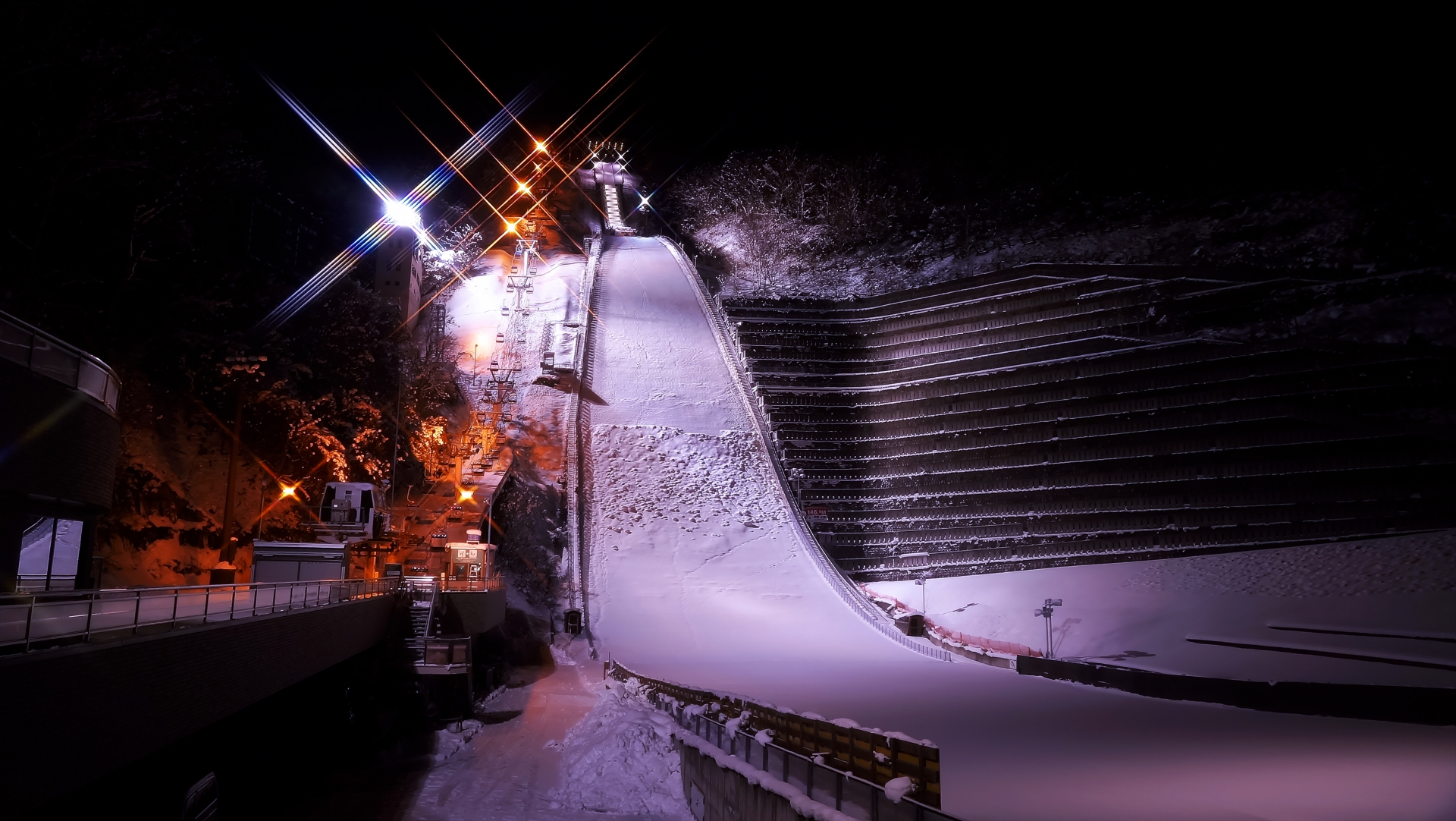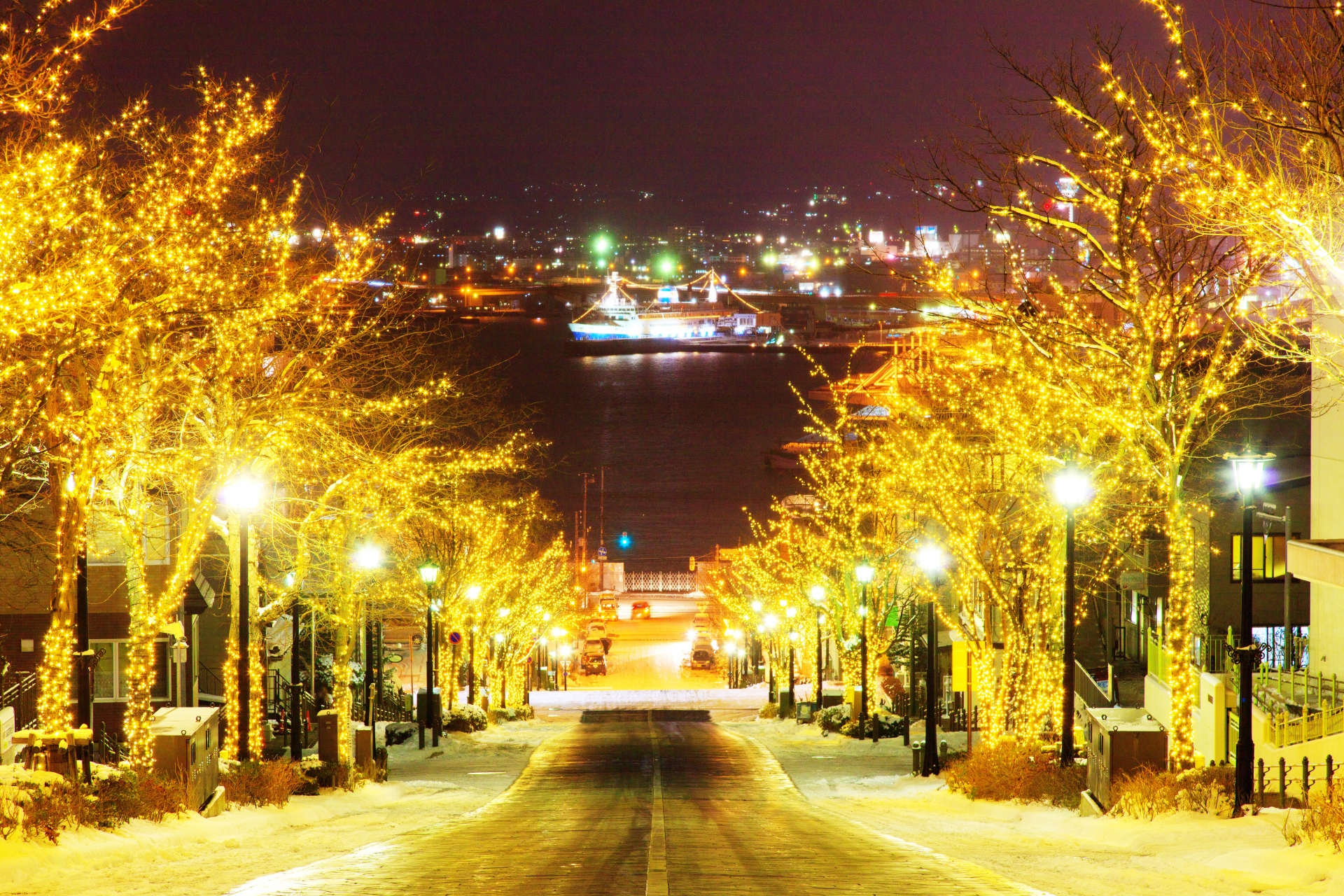Winter Hokkaido
Winter Climate in Hokkaido
In Hokkaido, the first snow falls in early November, and the average temperature drops below freezing in December. Snowstorms sometimes disrupt the transportation system. In winter, the temperature indoors is high and the difference in temperature between inside and outside is over 30 degrees Celsius, so it is necessary to wear layers of clothing that can be easily removed. By the second half of March, the accumulated snow begins to melt and the sounds of spring can be heard.
Monthly Average Temperature by Region
| Sapporo | Hakodate | Asahikawa | Kushiro | Tokyo | |
| December | – 0.8℃ | 0.0℃ | -3.9℃ | -1.4℃ | 8.1℃ |
| January | – 3.4℃ | -2.8℃ | -7.2℃ | -4.9℃ | 5.7℃ |
| February | – 2.8℃ | -2.0℃ | -6.1℃ | -4.2℃ | 6.3℃ |
| March | 1.3℃ | 2.1℃ | -1.3℃ | -0.1℃ | 10.0℃ |
Hokkaido’s Winter Highlights
Hokkaido in winter is known for its illuminations. Illuminations are held in various parts of Hokkaido from mid-November. In Sapporo, the Sapporo White Illumination and the Sapporo Snow Festival are major winter events. Many tourists visit the city and enjoy the delicious food. The Lake Shikotsu Ice Festival near New Chitose Airport is also popular, and the Sounkyo Ice Fall Festival, which takes three months to create, is fantastic. The Shiretoko Drift Ice Cruise is a must-see.
Asahidake Ski Area
A facility where you can enjoy skiing while enjoying the nature of the national park. Taking advantage of the climate of the Daisetsu Mountains, the facility is open until the end of Golden Week. Many people come here to enjoy the high quality powder snow.
- A spectacular view of the main peak of the Daisetsuzan mountain range (February)
- Asahidake Onsen, Higashikawa-cho, Kamikawa-gun, Hokkaido
- +81-166-68-9111
- Ride about 90 minutes by bus from JR Asahikawa Station
Aburiya Sohonten
The far-infrared rays from the charcoal fire and the ingredients from Hokkaido go together perfectly. You can enjoy hot and healthy dishes such as wagyu beef, crab, scallops, hokke (Okhotsk atka mackerel), shishamo, kichiji rockfish, and vegetables in a private room.
- Butterfly grilled kichiji rockfish (March)
- Aburiya Sohonten
ANA Holiday Inn Sapporo Susukino B1F, Minami 5-jo Nishi 3-chome, Chuo-ku, Sapporo-shi, Hokkaido - +81-11-530-6666
- 3 minute walk from Susukino Subway Station on the Namboku line.
Jozankei Onsen Shiraito waterfalls
This waterfall is popular for its beauty, which changes its appearance from early summer to autumn when the leaves change color. During the severe cold season, the waterfall freezes over, creating a fantastic sight.
There is a guidance map of the whole Jozankei Onsen area in Jozankei Tourist Information Center.
- Shiraito waterfalls in winter (February)
- Jozankei onsen higashi 2-chome, Minami-ku, Sapporo-shi, Hokkaido
- +81-11-598-2012 (Jozankei Tourist Association)
- 5 minute walk from Shiraito-no-taki Bus stop.
Sounkyo Ice Fall Festival
Three months in the making. The ice sculptures were created by working in sub-zero temperatures and freezing multiple layers of ice. The seven colored lights create a fantastic world. On weekends, fireworks are also set off, making it one of the most popular winter festivals in Hokkaido.
- Sounkyo Ice Fall Festival (February)
- Sounkyo onsen, Kamikawa-cho, Kamikawa-gun, Hokkaido
- 上川駅Take the Dohoku Bus [81] Sounkyo Line bound for Sounkyo from bus stop No. 2, Morino Terrace in front of Kamikawa Station→get off at Sounkyo bus stop, 1 minute walk.
Jewelry Ice in Toyokoro Town
Jewelry Ice can be seen from mid-January to late February every year at Otsu Beach in Toyokoro.
Ice from the Tokachi River flows into the Pacific Ocean and is washed up on the Otsu Coast.
The sight of the crystal-clear ice blocks sparkling in the sunshine is truly breathtaking.
- Jewelry Ice (March)
- Otsumotomachi, Toyokoro-cho, Nakagawa-gun, Hokkaido
- +81-15-578-7202 ( Toyokoro Tourism Bureau)
- About 60 minutes drive from Obihiro City.
Drift Ice Sightseeing & Icebreaker Ship “Aurora”
If you’re in Abashiri, climb aboard! The drift ice sightseeing icebreaker is only available during the winter. You can also see animals such as seals and Steller’s sea eagles. The view from the observation deck is fantastic! Don’t forget to bring warm clothes.
- Drift ice and White-tailed eagle (March)
- 5-1, Minami 3-jo Higashi 4-chome, Abashiri-shi, Hokkaido
- +81-152-43-6000
- Take a bus from Abashiri Station→get off at the drift ice ship stop "Ryuhyosaihyosennoriba".
Snow Candle Way (Jozankei Onsen)
The “Snow Candle Way” creates a fantastic space at Jozankei Shrine in the deep snow valley. After passing through the fantastic snow candle area, a mysterious forest appears where light and images merge with nature.
- Snow Candle Way (February)
- Jozankei onsen higashi 3-chome, Minami-ku, Sapporo-shi, Hokkaido
- +81-11-598-2012 (Jozankei Tourist Association)
- A short walk from Jozankei Jinja mae bus stop
Maruyama Park
Maruyama Park which has been loved for a long time as an oasis for Sapporo citizens. You can experience the beautiful winter nature. If you look around, you can see the “snow fairy” long tailed-tit, the owl and the marten in winter.
- Long-tailed tit (December)
- Miyagaoka, Chuo-ku, Sapporo-shi, Hokkaido
- +81-11-621-0453
- 5 minutes walk from Maruyama Koen Subway Station on the Tozai Line, Exit 3.
Tokachi Ranch
A large number of livestock are raised in the large ranch, and the observation deck in the ranch offers a magnificent 360-degree view. During the winter, the horses are exercised in the snow as part of their health care, and can be viewed from mid-January to the end of February.
- Snowstorm and Horses (January)
- 8-1 Komabanamiki, Otofuke-cho, Kato-gun, Hokkaido
- +81-155-44-2131
- Take a bus for Lake Shikaribetsu from Obihiro Station Bus Terminal and get off at Tokachibokujo-mae.
Odori Park
It’s a beautiful large park spreading for about 1.5 km east to west in central Sapporo. It’s also the venue for big events in winter including, the White Illumination in November, the Munich Christmas Market in December and the Snow Festival in February.
- Sapporo White Illumination (December)
- Odori Nishi 1-12chome, Chuo-ku, Sapporo-shi, Hokkaido
- +81-11-281-6400 ( Sapporo Tourist Association)
- Get off at Odori Subway Station on Namboku Line, Tozai Line and Toho Line.
Foggy Ice Spots in Sarabetsu
When the temperature is below minus 20 degrees Celsius, the water vapor rising from the surface of the Sarubetsu River turns into ice and adheres to the plants and trees as silver frost. You can enjoy nature’s art in the beautiful world of ice from mid-January to early February.
- Foggy Ice (February)
- Seo, Sarabetsu-mura, Kasai-gun, Hokkaido
- +81-155-52-2211 (Furusatokan)
- About 10 minutes drive from Obihiro Airport
Okurayama Ski Jump Stadium
The Okurayama Ski Jump Stadium was one of the stadiums for the 1972 Winter Olympics. The observatory is located 307 meters above the ground and offers a spectacular view of Odori Park and the rest of Sapporo.
- The ski jump stadium at night (January)
- 1274 Miyanomori, Chuo-ku, Sapporo-shi, Hokkaido
- +81-11-641-8585
- From Maruyama Koen Subway Station, Exit 2, Maruyama Bus Terminal No. 4, take the JR Hokkaido Bus, Okurayama Line, Kuramaru-go, 15 minutes.
Kushiro City Red-crowned Crane Natural Park
This park protects the red-crowned crane, a special natural treasure, and is open for viewing all year round. A family of cranes also live here, and you can see them eating and walking up close.
- Red-crowned Crane (December)
- 112 Tsuruoka, Kushiro-shi, Hokkaido
- +81-154-56-2219
- Take a bus for Akanko Onsen from Kushiro Station and get off at Tsuru-koen, and walk for 1 minute.
Hakodate Tropical Botanical Garden
The Hakodate City Tropical Botanical Garden, located in a corner of Yunokawa Onsen Town, is home to 3,000 tropical plants of about 300 species. Also, at the Saruyama Hot Springs, about 90 Japanese macaques can be seen taking a dip in the hot springs from December through May.
- Japanese monkey entering the hot spring (March)
- 1-15, Yunokawa-cho 3-chome, Hakodate-shi, Hokkaido
- +81-138-57-7833
- 15 minutes walk from Yunokawa tram stop.
Hakodate Hachimanzaka slope
Going back from Old Public Hall of Hakodate Ward, there are streets where luxurious brick construction and traditional houses of wooden Western-style buildings have been built along with the development of foreign trade.
This is a beautiful road that overlooks the harbor as a slope following the original Hakodate Hachimangu Shrine (now relocated). At the bottom of the slope, you can see Hakodate Port and the Hakodate City Seikan Train Ferry Memorial Museum Mashu-maru, and at night the slope is beautifully lit with twinkling city lights.
- Hachimanzaka Slope Illumination (December)
- 14 Motomachi, Suehiro-cho, Hakodate-shi, Hokkaido
- +81-138-23-5440 (Hakodate Tourist Information Center)
- 1 minute walk from Sehiro-cho tram stop.


